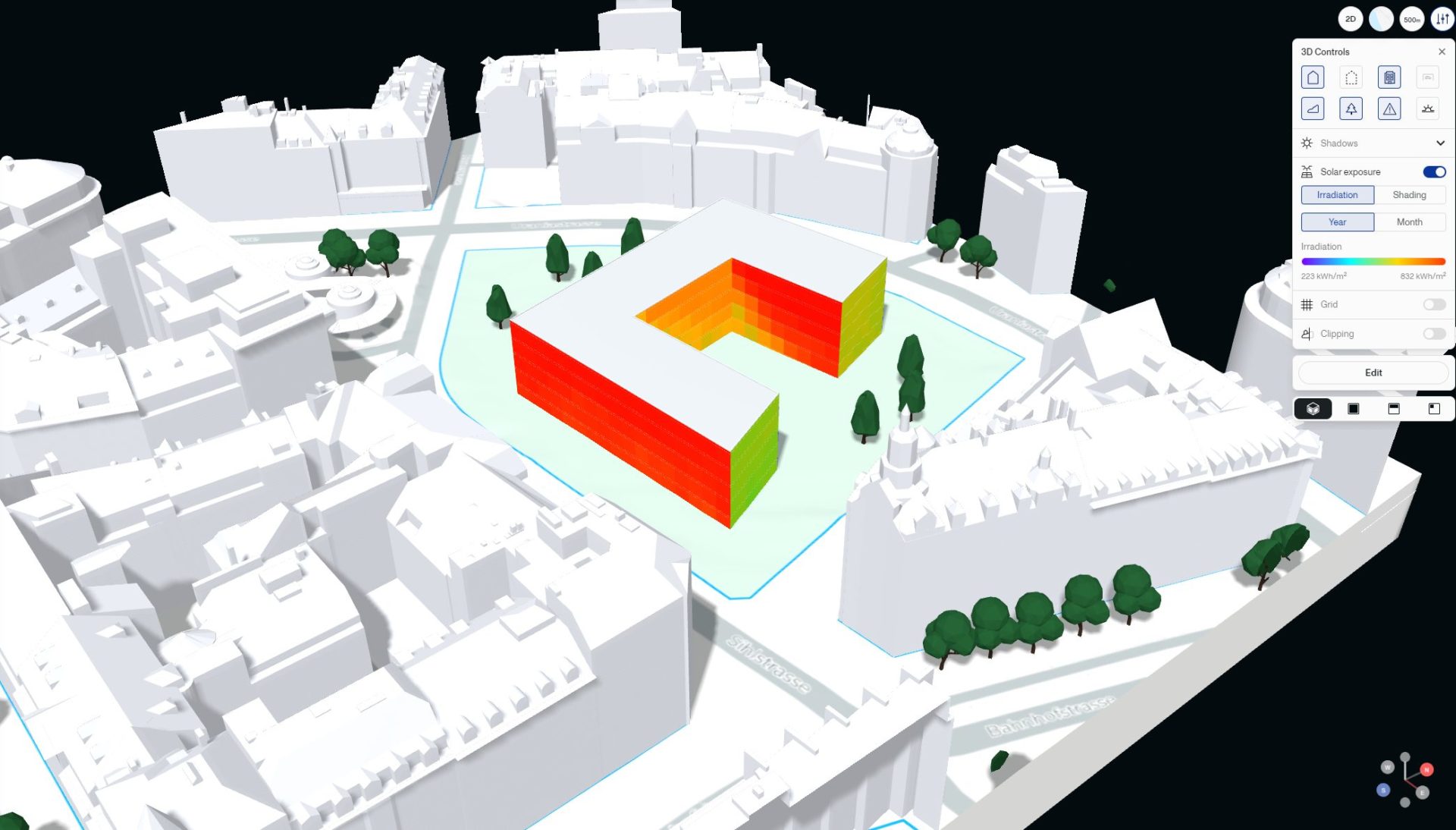August 12th, 2024

Screenshot of the graphic interface of the direct solar irradiance simulation tool. Simulation completed for the „Polis“ building in Pregassona (TI – CH). Source: Amenti AG.
Authors: Domenico Altieri, Mohamed Boutaleb, Alberto Follo (SUPSI), Tönu Mauring (Amenti AG)
In architectural project development and real estate investments, accessing comprehensive information is crucial for making informed decisions that impact sustainability, performance, and costs. However, managing diverse data during initial project phases can be challenging. Energy assessments conducted at various design stages must promote sustainable built environments in line with the Swiss Energy Strategy 2050, emphasizing energy efficiency and the adoption of renewable energy systems (RES). In this regard, Photovoltaic (PV) technology, due to its low maintenance costs, immediate availability of solar radiation, and improved energy conversion efficiency, is pivotal in achieving these sustainability goals.
The European Directive on the Energy Performance of Buildings (EPBD) mandates that new buildings in European Union countries must achieve high energy standards, increasingly leveraging renewable energy sources. In this context, Building-Integrated Photovoltaics (BIPV) represents an innovative approach to promote renewable energy in the construction sector. Unlike traditional Building-Applied Photovoltaics (BAPV), BIPV integrates PV cells into building elements (e.g., facades, roofs), fulfilling both energy production and architectural functions, thereby enhancing energy efficiency and local renewable energy generation.
Amenti AG, a Zurich-based startup, addressing the need for early detailed information in real estate projects, is actively developing a Software as a Service (SaaS) application. This tool utilizes local data for feasibility assessments but lacks integration for BIPV systems. Collaborating with the University of Applied Sciences and Arts of Southern Switzerland (SUPSI) and Viridén + Partner, Amenti AG is enhancing its application through a Swiss Innovation Agency-funded project. This initiative aims to integrate BIPV potential assessments into the tool, using machine learning for rapid, accurate solar potential calculations across various design scenarios.
The new module will enable users to evaluate BIPV feasibility, generate PDF evaluation reports, and make informed decisions on solar photovoltaic integration early in the design process. This aligns with industry trends towards more sustainable building practices and renewable energy integration. The solar potential estimation model considers local shading, site characteristics, and environmental factors using machine learning to ensure accuracy without requiring specialized knowledge or tools. Calibration involved extensive data collection and model validation, achieving robust performance across different urban scenarios.
In conclusion, integrating BIPV solutions into building facades offers significant environmental and economic benefits. Amenti AG’s innovative approach enhances accessibility and usability of solar potential assessments, facilitating informed decision-making and promoting sustainable building practices.






